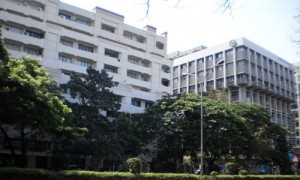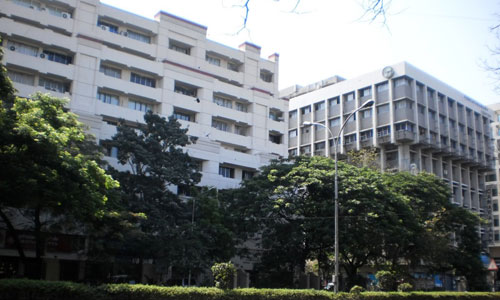 Track2Realty: Cushman & Wakefield estimates commercial office space demand of over 180 million square feet (msf) in the next five years (2012 – 16) in the top 8 cities of the country. This was released in the annual publication entitled “Evolving Paradigm – Future of Indian Real Estate” in association with Global Real Estate Institute (GRI) at their India Summit 2012. The report also estimates the total expected supply for the next five years in these eight cities as 219. 6 million sqft, basis announced projects and current pace of construction; indicating a condition of excess supply in the coming few years.
Track2Realty: Cushman & Wakefield estimates commercial office space demand of over 180 million square feet (msf) in the next five years (2012 – 16) in the top 8 cities of the country. This was released in the annual publication entitled “Evolving Paradigm – Future of Indian Real Estate” in association with Global Real Estate Institute (GRI) at their India Summit 2012. The report also estimates the total expected supply for the next five years in these eight cities as 219. 6 million sqft, basis announced projects and current pace of construction; indicating a condition of excess supply in the coming few years.
The highest demand will be recorded in Mumbai with an estimated 44 msf over the next few five years followed by Bengaluru (31 msf) and NCR (27.8 msf). The top three cities will constitute approximately 57% of the total office space demand. Ahmedabad will record the lowest office demand of approximately 7.8 msf in the next five years, while Kolkata will be finish one but last with demand of 8.4 msf.
Sanjay Dutt, Executive Managing Director, South Asia, Cushman & Wakefield, “Based on expected recovery of the economy, partly due to global recovery, but largely due to the positive signals being sent out by the Central Government to promote business investments, office space demand is expected to witness a positive growth of 10% in 2013 and 20% in 2014. This is, however, likely to reduce over the next two years (2015-16) drawing from the forecasts that predict a slowdown in global GDP.”
Sanjay continues, “A number of factors will act as catalyst for the growth and sustenance of office demand such as improvements in infrastructure, connectivity and the quality of supply. Additionally, more and more companies are looking at rationalizing their real estate portfolio by relocating and/or consolidating their wide-spread operations, besides actually growing their businesses. This is expected to lead to an increase in leasing activities and also add to the net absorption. Cities such as Bengaluru, Chennai and Pune, which are expected to witness lower demand-supply gap, may also see moderate rental increases over the next 5 years. On the other hand, NCR, Mumbai and Kolkata that have considerable oversupply may see rental correction in select micro markets during that period. Rental correction will not take place across the board as local micro-market dynamics such as location, quality, existing occupier profile, access to transportation nodes, etc will play an important role in deciding the rentals vis-à-vis the demand from occupiers.”
Mumbai is also expected to see the highest supply in the next few five years with an estimated 52.6 msf of fresh office space supply followed by NCR (43.8 msf) and then by Bengaluru (31msf) in the next five years. The office market is expected to be oversupplied by approximately 21% in the period of 2012 – 16. The demand to supply gap is expected to be the highest at 40% in 2012 but will reduced to 6% by the 2016. In the period of 2012 – 16, Bengaluru is expected to have to lowest demand – supply gap with supply exceeding by less than 1%, while Kolkata will have the highest gap 64% with supply exceeding demand.
NCR and Mumbai will also experience a high demand – supply gap of 57% and 19% respectively, where supply will exceed demand. Chennai and Pune are among the cities to see lower demand – supply gap with supply only exceeding by 2% and 4% respectively.
The cities of Ahmedabad, Chennai and Hyderabad are expected to see steady increase in both supply and absorption during 2012 – 2016 due to demand from sectors such as manufacturing and services sector. Most companies in these sectors are likely to be cost conscious in the backdrop of moderating economic growth and increasing costs and thus choose locations which offer relatively lower rents. The Western Indian cities namely Ahmedabad and Mumbai are expected to see the double digit growth in absorption levels in the five years horizon, while, growth in absorption levels in most other cities will not breach 5% annual growth during the period.
NCR
NCR is expected to witness supply close to 43 msf in the next 5 years (2012 – 2016). Absorption for the same period is expected to be around 27 msf which means approximately 64% of the upcoming supply is expected to get absorbed. The IT/ITeS and consulting sectors are expected to contribute largely to the expected absorption. In most locations of Gurgaon and Noida, there have been delays in construction deferring the supply time lines to future dates. Also, there is a significant number of under construction and planned developments across the city. With the given demand supply gap, rental correction is expected in the coming years.
MUMBAI
Mumbai is expected to witness the highest cumulative demand and supply the period 2012 – 2016. While demand is estimated to be approximately 44 msf, supply will outstrip demand by over 20%. The demand drivers for Mumbai’s office market will be led by banking, insurance, financial services, consulting, media, mostly in need for large corporate offices.
Whilst traditionally, Mumbai is not a destination of choice for outsourcing companies to set-up their operations, due to cost sensitivities involved, the city is expected to reap the benefits of a large specialised and skilled human resources pool which can be a potential draw for specialised outsourcing sectors such as legal, business consulting and analytics, healthcare, retail, R&D, etc. Also, multinational companies across sectors are expected to contribute to absorption by taking up Grade A space in the city.
Though there are indications that the demand-supply gap for Mumbai may go up to as high 8 msf of excess supply.. This is mainly on account of the slower growth in demand in the as compared to the robust supply additions within the city. Developers may exercise discretion basis the demand trend of the period to control the actual supply that enters the market and ensure better occupancies.
BENGALURU
Bengaluru is expected to witness supply additions of approximately 31 msf in the coming five years, while supply is expected in this period is also going to in the range of 31 msf, leaving the gap between supply and demand to less than 1% of oversupply. The city has witnessed the highest absorption during 2011 and is expected to witness healthy absorption levels in the coming few years as well. It is likely to have the lowest demand supply gap due to slow supply additions and steady absorption levels. Rentals are expected to be stabilize or increase in select locations of the city.
CHENNAI
Chennai is expected to witness supply addition close to 23 msf in the next five years. while supply will be 22 msf. The demand to supply gap is approximately 2% with supply exceeding demand in te next five years. IT/ITeS, manufacturing and services sectors are expected to significantly contribute to the absorption levels. Rentals are expected to be stabilize in the coming few years.
KOLKATA
Kolkata’s office market is expected to witness supply of close to 13 msf in the next 5 years (2012 – 2016). Absorption for the same period is expected to be approximately 8 msf which means approximately 61% of the upcoming supply is expected to get absorbed. Demand is expected to be driven mainly by the IT/ITeS sector. While the city is expected to witness a high demand supply gap, rental correction is expected during the same period.
PUNE
Pune is expected to witness supply of approximately 16 msf from 2012 – 2016. Out of this total demand in the next five years is expected to be 15 msf, with marginal over supply of approximately 4% in this period. Given the ongoing subdued leasing and low supply, the demand supply gap is not expected to be very high in the coming years. The demand is expected to be mainly back by BFSI, media, pharma & healthcare sectors. Rentals are also expected to be stabilize during the same period.
HYDERABAD
In the next five years (2012 – 16), Hyderabad is expected to witness office supply of approximately 25 msf, out of which approximately 22 msf is expected to get demand for office in the same period. Demand is driven by the increase in sectors like engineering, professional services and technical services in the city. The demand supply gap at approximately 3 msf is not very high due to the buoyant demand and increasing upcoming supply in the segment.
AHMEDABAD
Ahmedabad is expected to witness supply additions of approximately 12 msf in the coming five years which is the lowest amongst the top 8 cities taken into consideration. Demand is however expected to be only 62% of the total expected supply in the next five year. BFSI and small scale industries are expected to be the key demand drivers that are looking at taking advantage of the prevailing lower rents as compared to those in other cities. The demand supply gap is expected to be at approximately 4 msf for during the same period.





